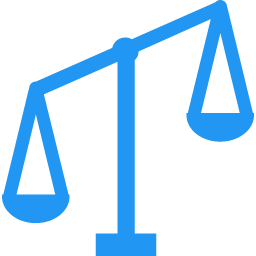Mura and Muri

When most people think of waste in a business process they think about excess materials.
People who have had contact with lean manufacturing talk about waste in the context of Muda, but often forget about the other two key forms of wastes laid out in the Toyota Manufacturing System, Mura and Muri.
While the 7 (8) Muda wastes are the results that we see on the surface, it is quite often problems with Mura and Muri that are causing them. Muda is just what is readily visible as the low hanging fruit.
What is Mura?
Mura is a Japanese term for unevenness.
"unevenness; irregularity; lack of uniformity; nonuniformity; inequality"
This is the inconsistent or uneven application of time and/or resources across a process. An example of this may be where a manager is measured on a monthly quota. The department rushes during the last week to always do what it can to hit its' number. This rush then leave shortages and a lack of target focus in the first weeks of the new month. This type of behaviour leads to a hockey stick style effect where production always raises sharply at the end of each month.
Smoothing this out and working to the demand of the customer is far better.
Causes of Mura -
Most causes of Mura stem from
- Uneven customer demand
- Inventory swings – from too much to too little
- Uneven production speed or changing production quantities
- Uneven quality of good parts
- Irregular or erratic working rhythm
- Uneven training of the workers
- Uneven distribution of the workload
Reducing Mura
Tackling Mura requires openness and cooperation in the supply chain. Being flexible with product design and focusing on creating standard work for all operators.
- Variability will always degrade performance of a production system
- Variability in a system will be buffered by some combination of inventories, capacity or time.
Hopp & Spearman (2000)
So to reduce variability there are two key areas to focus on.
Reducing the variation in customer demand, and reducing the variation in your process.
- Modular product design. Allow the product to be produced uniformly and put together multiple ways ie like ikea furniture.
- Production leveling in production planning. Use Heijunka and other lean methods.
- Building flow at the production level.
- Standardized work.
- Reduce the number of links in a supply chain. External warehousing or moving parts of a plant is not a good idea in this sense.
- Reduce delivery times between links. Off shoring across the world? The possible six weeks of transport times are terrible for inventories and lead times in the chain.
- Create transparency between links in the supply chain when it comes to orders. This will reduce the tendency to increase the order size at every link.
What is Muri?
Muri is a Japanese term for overburden, unreasonableness or absurdity.
"unreasonableness; impossible; beyond one's power; too difficult; by force; perforce; forcibly; compulsorily; excessiveness; immoderation”
Muri is stress. Stress on people, time and resources.
Muri causes breakdowns in machinery and absenteeism in employees.
Causes of Muri
- People
- Working long hours
- Heavy mental and physical lifting
- Unsuitable posture or ergonomics
- Noise
- Tasks too difficult
- Tasks too easy
- Excessive stress
- Anything that leads to burnout or repetitive strain injury
- Insufficient Training
- Humiliation
- Excessive praise
- Difficult, Dangerous, or Dirty tasks (the 3K in Japanese)
- Organizations
- Requesting supplier demand without forewarning and planning
- Using market power to economically manipulate suppliers or customers
- Machines and Materials
- Pushing machines and tools leading to increased wear and tear
- Skipping maintenance
- Mistreatment of materials; e. g., storing parts in inappropriate conditions
- Loading a vehicle or container beyond its weight limits
Reducing Muri
Reducing Mura is the most effective way to reduce Muri as a balanced flow will reduce cases of burden. As hard as we try there will always be some variation to handle.
For people related Muri, you can implement the 6S, Standard work and Jidoka.
6S is
- Safety,
- Sort,
- Straighten,
- Sweep,
- Standardize
- Sustain
6S is the Lean method to create a safe working environment. It should also facilitate the most efficient way of performing a task. Sorting makes sure only the necessary items can be found at a workstation and straightening makes sure that all necessary tools and items are always at hand when you need them. An organized workstation prevents people from having to search for materials or tools and therefore reduces stress.
The same goes for the mind. An organized mind with a daily plan lends itself to less stress.
Standard Work is the second tool to use to minimize people related Muri. It describes the most safe and most efficient method of performing a task. Having clear Standard Operating Procedures reduces the chances people perform un-safe actions to get the job done. For example by using a machine the wrong way or omitting a critical step.
Jidoka is about stopping the production line whenever there is a problem. At Toyota, this translates into the "Andon", a cord hanging above the production line. If an employee pulls the cord, production is stopped across the entire line. All employees are notified telling them where the problem occurred. With the line stopped, people can completely focus on solving the problem at hand. Stopping the line also prevents the error from infecting multiple products or batches and therefore more defects.
The Jidoka principle is described in four steps.
- Find a deviation
- Stop production
- Fix the problem and analyze the root cause of the problem &
- Prevent it from happening again
For machine related Muri you can use effective preventative and autonomous maintenance.
Preventative Maintenance means maintenance that happens regularly, no matter what the quality of the output is. By maintaining the good shape of the machine, issues can be prevented which would otherwise lead to defects. Preventative maintenance should be cheaper than waiting for the machine to break down and corrective maintenance is necessary. Preventative maintenance does not only reduce Machine Muri, it also reduces Mura for the technical staff because it should significantly reduce the number of unplanned jobs they receive.
Autonomous Maintenance is the next step after preventative maintenance. It means that operators maintain their own machines to some extent. The underlying thought is that operators work with the machines all day, so they notice abnormalities instantly.
Removing Mura and Muri and in turn Muda
The majority of Muda waste can be tackled through the careful examination and elimination of issues with Mura and Muri.
Before improving a system it is essential to first create stability. Attaining basic stability in the 4 M's (men, machines, material and method) are essential for sustained reduction of Muda.
Without this basic stability there will be Mura due to variance.
As a general rule you are best to work on Mura first - and create a predictable level of flow in your business. This then \ will highlight the present unreasonableness, Mura in the system. Removing this Mura will remove its corresponding Muda from the work flow.
Without tackling Mura and Muri first your Muda will keep returning to haunt you.




